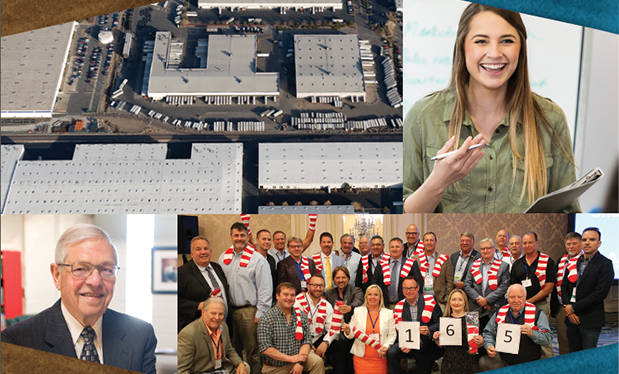Falls continue to hold the No. 1 spot for construction worker fatalities year after year. Sadly, fall-related deaths among roofing workers are one of the biggest contributors to that sobering statistic. It comes as no surprise that falls from roofs, slips, trips and falls from ladders command tremendous attention from the government, academia, unions, trade associations and contractors.
NRCA engages with all these stakeholder groups, and despite often approaching matters from divergent perspectives, stakeholders show tremendous unanimity in searching for ways to reduce and eliminate these tragedies. NRCA has been working with these groups through its Health and Safety Committee, and a new approach has been added to the effort.
Routes of attack
Reducing or eliminating falls, slips and trips is no small task; however, roofing work presents an almost insurmountable number of hurdles not the least of which is starting many jobs on top of a structure that is sloped. Add weather, labor turnover, and material and production challenges, and it might appear downright impossible. During the 32 years I’ve worked for NRCA, I have witnessed many approaches to fall protection with varying degrees of success. For example, the Occupational Safety and Health Administration issues citations and penalties and offers training grants and outreach programs; the National Institute for Occupational Safety and Health conducts research and offers innumerable training and educational products (many for free); and many contractors implement discipline and incentive programs.
When OSHA was formed in 1970, NRCA expressed its concerns to Congress regarding the agency’s inspection, citation and penalty provisions as being overly intrusive and onerous. In fact, over the years, the number of citations and dollar amounts of penalties have been significant. Specifically, of the top 10 OSHA construction citations issued, fall protection-related violations issued because of lack of use, incorrect implementation and/or lack of proper (or any) training consistently rank in the top five. It is no surprise the roofing industry continues to be in OSHA’s inspection crosshairs given the grim fall-related data.
Contractors try to self regulate by disciplining workers when noncompliance occurs, and it is now commonplace to see active fall-prevention and protection methods employed at job sites.
But this commitment is not without consequence: Strict adherence to these policies includes knowing it will be extremely hard to replace a worker who is terminated for not following safety protocol. This fact and pressure from already upset customers who have been waiting for projects delayed because of supply chain issues are creating significant headwinds for contractors who follow through with their safety promises.
Roofing contractors have tried many incentive-based programs to encourage safe behaviors. Whether it’s company swag or gift cards, roofing workers respond well to competition and rewards when programs are set up well.
For example, if you notice workers aren’t consistently tying off or are wearing their harnesses too loosely, create an incentive program that targets the specific desired behavior. There are some tenets to keep in mind to ensure a successful incentive effort:
- Keep the rules simple to understand and accomplish.
- Create a fair scoring system.
- Report results at regular intervals.
- For behavior that seems difficult to change, begin by awarding the prize(s) daily and then move to multiple days and end with a weekly cycle when it becomes apparent the crew’s behavior is aligning with the safety goal.
Successful incentive programs are targeted, short in duration, easy to accomplish and fair—they often add a little fun to the workplace, too.
SAFETY RESOURCES In 2014, NRCA was approached by CPWR, The Center for Construction Research and Training, to form a partnership with the United Union of Roofers, Waterproofers and Allied Workers to address safety challenges in the roofing industry.
Fall protection and ladder safety are a main area of focus. There is a wide variety of training materials available from CPWR and, in particular, its Stop Construction Falls webpage (stopconstructionfalls.com) houses a number of webinars and safety materials directed at roofing fall prevention developed through the partnership.
In addition, NRCA updated its fall-protection compliance program, Serving Up Safety: A Recipe for Avoiding Falls on the Job. This program helps you comply with OSHA fall-protection regulations in every state; there are specific sections addressing state-plan regulations that differ from federal OSHA rules. The program is available at nrca.net/shop.
A new effort
NRCA has seen success generated from providing training that includes demonstration and testing, such as via its torch safety certification programs. In its continuing effort to reduce the industry’s falls-related incidents and help contractors succeed with their safety efforts, NRCA’s Health and Safety Committee has helped create a new program that takes fall-protection training to a new level. Starting in February, NRCA will offer a three-day, comprehensive fall-protection training and educational program that will give attendees the necessary tools to satisfy OSHA’s requirements for competent and qualified persons.
In its construction standards, OSHA defines a competent person at 29CFR 1926.32(f) as “ … one who is capable of identifying existing and predictable hazards in the surroundings or working conditions which are unsanitary, hazardous, or dangerous to employees, and who has authorization to take prompt corrective measures to eliminate them.”
Accordingly, there are three hurdles: being able to identify existing hazards; knowing what protective measures to take to eliminate them; and having the authority to do so promptly.
The rule specifically calls out the competent person requirement as applying to a safety monitor: “Section 1926.502(h)(1) requires that safety monitoring systems must designate a competent person to be the safety monitor for employees working in areas where no other fall protection measures are used.”
Section 1926.502(h)(1) also specifies, among other things, that safety monitors must be on the same walking working surface, be within visual sight of workers—close enough to orally communicate with the workers they are monitoring—and not have any other responsibilities that could take their attention away from the workers they are monitoring. In addition, safety monitors must warn workers when it appears the workers are not aware of fall hazards or are acting in an unsafe manner.
OSHA defines a qualified person as “ … one who, by possession of a recognized degree, certificate, or professional standing, or who by extensive knowledge, training, and experience, has successfully demonstrated his ability to solve or resolve problems relating to the subject matter, the work, or the project.” This person may exceed a competent person’s expertise in a specific area by virtue of possessing recognized greater knowledge of or experience with a given topic.
It may sound as if these two “persons” are the same, but they are not. The rule provides two examples of how they are used in different scenarios. First, OSHA provides clear guidance about who the safety monitor is and the scope of his or her duties. Specifically, a safety monitor is a competent person who knows how to recognize hazards, has the authority to stop exposed workers and, if necessary, knows when to call on a qualified person to advise about specific details.
Second, in the construction fall-protection standards published in 1998, OSHA states: “The employer shall assure that each employee has been trained, as necessary, by a competent person qualified in the following areas … ” and goes on to list specific items. In this case, OSHA calls for a trainer to be a competent person who is also qualified. But it doesn’t define “qualified.”
However, in its 2016 final rule updating its general industry standards for fall protection-related rules, OSHA recognized the perceived confusion with these terms. It clarified competent persons qualified to train workers in all subjects and topics must have met the requirements of a qualified person. Specifically, a trainer must have, at a minimum, a certificate that addresses or extensive knowledge of:
- The types of fall hazards, how to recognize them and the procedures to minimize them
- The correct procedures for installing, inspecting, operating, maintaining and disassembling personal fall-arrest systems
- The correct use of PFAS and other specified equipment
In this unique situation, OSHA requires that for the purpose of fall-protection training, a trainer must have met the requirements of both a qualified person (one who has the recognized breadth of knowledge and demonstrated fall-protection ability) and competent person (one who has the authority to identify hazards and take corrective measures as needed).
Appreciating this unique distinction, NRCA developed its fall-protection competent person training course to not only raise the level of sophistication for roofing professionals who train and are charged with keeping workers safe but also to meet and provide these required designations to attendees. Just as roof system installation training has become more technically complex, industry safety and health training must follow suit.
The 24 hours of training NRCA’s program provides is intended to arm attendees with an unprecedented level of in-depth fall-protection knowledge. Attendees can be foremen, superintendents, safety directors, owners or anyone else responsible for training roofing workers and will receive a comprehensive, interactive, hands-on learning experience. The core content is based on OSHA regulations; agency letters of interpretation; ANSI Z359, “Fall Protection and Fall Restraint,” requirements; U.S. Army Corps of Engineers’ EM-385 safety manual; and fall-protection equipment manufacturers’ product instructions and materials.
NRCA’s program is designed to meet OSHA’s competent and qualified person certification and training requirements and the U.S. Army Corps of Engineers’ EM-385 24-hour training requirements. NRCA has created numerous interactive exercises and demonstrations related to:
- Fall-hazard analysis
- Anchor placement and installation
- Deck integrity assessment
- Self-retracting devices
- Harness fit and inspection
- Suspension trauma, proof testing, maximum arrest-ing force, self-rescue and assisted rescue from an arrested fall
- Fall-protection system installations to build com-prehensive knowledge of fall-protection issues and controls
A long-term goal
There is no better goal than to have roofing-related falls, slips and trips be a distant memory. But the industry still has a lot of work to do. A critical analysis of all the elements used in the roofing industry to reduce and eliminate falls must be ongoing and focused on ending fall-related injuries and deaths suffered by workers. Building the awareness of and competency in fall protection and prevention through effective training will do just that. Working toward this goal is worthy of the full dedication of the industry and its partners.
For an article related to this topic, see “A new twist,” April 2017 issue.
TOM SHANAHAN, MBA, CAE, is NRCA’s vice president of enterprise risk management and executive education.



